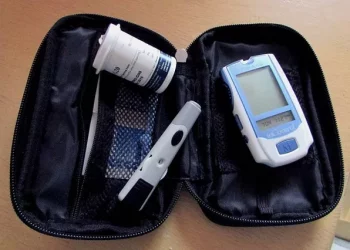Type 2 diabetes is a chronic condition that affects the way the body processes blood sugar (glucose). With a steady increase in global prevalence, managing diabetes has become a major concern. One of the most effective ways to control and even reverse the symptoms of type 2 diabetes is through dietary changes. This article explores the latest trends and research-backed dietary approaches for individuals with type 2 diabetes.
The Role of Diet in Managing Type 2 Diabetes
A key aspect of managing type 2 diabetes is maintaining a healthy diet. The body’s ability to process glucose is impaired in diabetes, resulting in elevated blood sugar levels. Proper diet control can significantly improve blood sugar regulation and reduce complications associated with diabetes. Unlike older methods that focused primarily on restricting carbohydrates, the new approach emphasizes balanced nutrition and controlling the insulin response.
What is the New Diet for Type 2 Diabetes?
Recent research has provided new insights into how certain dietary patterns can help manage type 2 diabetes. The new diet focuses on whole foods, high-quality fats, adequate protein, and fiber, all while keeping a close watch on blood sugar levels. Here’s a detailed breakdown of what this diet entails:
1. Focus on Low Glycemic Index (GI) Foods
Foods with a low glycemic index (GI) release glucose more slowly into the bloodstream, helping to prevent spikes in blood sugar. The GI system categorizes foods on a scale from 0 to 100, where low-GI foods score below 55. Incorporating low-GI foods like whole grains, legumes, and non-starchy vegetables can improve blood sugar control. These foods help in maintaining steady glucose levels throughout the day.
2. High Fiber Intake
Fiber is essential in a diabetic diet, as it slows the absorption of sugar into the bloodstream, preventing blood sugar spikes. High-fiber foods, such as vegetables, fruits, legumes, and whole grains, provide bulk to the diet, which aids digestion and improves gut health. Fiber also helps in managing weight, which is crucial for individuals with type 2 diabetes.
3. Healthy Fats
While fats have often been demonized in the past, recent research has shown that healthy fats can help improve insulin sensitivity. Sources of healthy fats include olive oil, avocados, nuts, and fatty fish like salmon and mackerel. These fats help reduce inflammation, a key factor in insulin resistance, and can improve overall heart health.
4. Lean Proteins
Protein helps stabilize blood sugar levels by slowing down the absorption of carbohydrates. Incorporating lean protein sources like chicken, turkey, tofu, and fish can help maintain muscle mass, which is important for metabolic health. It’s essential to avoid processed meats, which can contain unhealthy fats and additives that worsen diabetes symptoms.
5. Avoid Processed and Refined Carbohydrates
One of the main culprits for spikes in blood sugar is the consumption of processed carbohydrates. These are found in foods like white bread, sugary snacks, and sodas. Refined carbs are quickly digested, causing a rapid increase in blood sugar levels. It’s best to replace these with whole grains, vegetables, and fruits that are rich in fiber and have a low glycemic index.
6. Intermittent Fasting
Intermittent fasting has gained popularity as a method for managing type 2 diabetes. Studies have shown that intermittent fasting can improve insulin sensitivity, reduce inflammation, and promote weight loss. While this approach may not be suitable for everyone, it can be a viable option for those who are overweight and have difficulty managing their blood sugar levels through diet alone.
The Benefits of a Diabetic Diet
Adopting the new diet for type 2 diabetes can bring numerous health benefits beyond just controlling blood sugar levels:
1. Improved Blood Sugar Control
One of the most significant benefits of the new diet is its ability to help maintain healthy blood sugar levels. By avoiding processed foods, limiting refined carbs, and focusing on whole, nutrient-dense foods, individuals with diabetes can experience improved glycemic control. Regular monitoring of blood sugar can also help identify which foods trigger spikes or drops in glucose levels.
2. Weight Loss
Many people with type 2 diabetes are overweight or obese, and losing weight can have a significant impact on blood sugar control. The new diet emphasizes low-calorie, nutrient-dense foods that promote satiety and prevent overeating. Weight loss can also improve insulin sensitivity, further helping to stabilize blood sugar levels.
3. Reduced Risk of Heart Disease
People with diabetes are at a higher risk of heart disease. The new diet encourages the consumption of heart-healthy fats and limits the intake of unhealthy fats found in processed foods. As a result, individuals with diabetes can reduce their risk of cardiovascular issues, which are common among people with the condition.
4. Improved Overall Health
By focusing on a balanced, nutrient-dense diet, individuals with type 2 diabetes can experience improvements in overall health. This includes better digestion, reduced inflammation, improved energy levels, and a lower risk of other chronic diseases. The new diet promotes a holistic approach to health that goes beyond just managing blood sugar.
Practical Tips for Adopting the New Diet
Making dietary changes can be challenging, but with the right approach, it’s possible to successfully implement the new diet for type 2 diabetes. Here are some practical tips to get started:
1. Plan Your Meals
Meal planning is essential for controlling blood sugar levels. By preparing balanced meals in advance, you can ensure you’re consuming nutrient-dense foods that are low in sugar and refined carbohydrates. Having a set meal plan can also help prevent impulsive food choices that may not align with your dietary goals.
2. Portion Control
Portion control is crucial when managing type 2 diabetes. Even healthy foods can cause blood sugar spikes if consumed in large quantities. Using smaller plates and measuring portion sizes can help you stay within healthy limits. Additionally, it’s important to eat smaller, more frequent meals throughout the day to prevent large fluctuations in blood sugar.
3. Choose Whole Foods
Whole foods, such as fruits, vegetables, whole grains, and lean proteins, should make up the majority of your diet. These foods provide essential nutrients and fiber without the added sugars and unhealthy fats found in processed foods. Always try to eat fresh, unprocessed food whenever possible to maximize health benefits.
4. Monitor Your Blood Sugar
Regular blood sugar monitoring is key to understanding how your body responds to different foods. Using a blood sugar monitoring tool can help you track fluctuations and make necessary adjustments to your diet. Monitoring blood sugar levels allows you to make informed decisions about which foods are best for your body.
Conclusion
The new diet for type 2 diabetes emphasizes the importance of whole, nutrient-dense foods that help stabilize blood sugar and improve overall health. By focusing on low-GI foods, high fiber intake, healthy fats, and lean proteins, individuals with type 2 diabetes can manage their condition more effectively. In combination with regular blood sugar monitoring, this diet offers a comprehensive approach to managing diabetes and preventing complications. With proper planning and lifestyle changes, individuals can live healthier, more fulfilling lives while managing their diabetes.
For more information on how to manage your diabetic diet and improve your blood sugar control, visit our comprehensive resources online.
Related topics:
What Type of Foods Should a Type 2 Diabetic Eat?



























